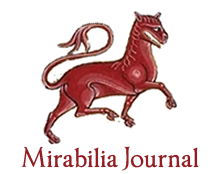Coronavirus, Population Genetics, and Humanities
Ángel GÓMEZ MORENO
Original title: Coronavirus, Population Genetics, and Humanities
Published in War and Disease in Antiquity and the Middle Ages
Cosmogonies and mythology of Ancient Egypt
Sofía ASTIZ
Original title: Cosmogonías y mitología del Antiguo Egipto
Published in
Keywords: Amarna, Aton, Egypt, Heliopolitan Cosmogony, Hermopolitan Cosmogony, Memphis, Menphite Cosmogony, Osiris, Thebes.
The evolution of the cult in Egypt was unstoppable. The gods of Ancient Egypt emerged and evolved in a dependent manner at territorial level, acquiring thus, greater importance as that space acquired it as well. They had a geographically limited power since they exercised it with those who were in their territory, so that the men and women who were living or simply passing through that place, should keep worship to that god in question to receive their protection and magic. In this article we will talk about the main gods of the main cities of Ancient Egypt mentioning, first of all, the most known cosmogony and from which the most important deities emerge.
Critical Edition and Analysis of La vida de sanct Honofre (The Life of Saint Onofre), Published in Valencia at the Beginning of the 16th Century
Vicent JOSEP ESCARTÍ
Original title: Edició filològica i breu comentari de La vida de sanct Honofre, publicada a València a principis del segle XVI
Published in
Keywords: 14th-16th c., Catalan Literature, Edition, Life of Saint Onofre, Valencia.
This article provides a study and philological edition of the Vida de sanc Honofre based on the 16th-c. princeps text. Although there exist previous modern editions of this work, none of them offers a critical text nor have been adequately disseminated for a wider audience. The introductory study analyses the date of composition of this work, its literary sources, and its process of composition.
D. Eleanor Lopez of Cordova’s (1362/63-1430) Memoires: A poetic of non-oblivion
Marcella LOPES GUIMARÃES
Original title: As memórias de D. Leonor López de Córdoba (1362/63-1430): uma poética do não esquecimento
Published in Medieval and Early Modern Iberian Peninsula Cultural History
Keywords: Eleanor Lopez of Cordova, Memoires, Peter of Castile, Trastamara.
The memoires of a Castilian lady Eleanor Lopez of Cordova consist on an unique document for three reasons: the female authorship within the context she was in, the autobiographic text and the support for the rightful faction defeated by the ascension of the Trastamara. Eleanor Lopez of Cordova is the daughter of Martin Lopez of Cordova, who was the Master of the Alcantara and Calatrava orders, and a rare survivor of the persecution that her family went through after her father’s death. With the marriage of Henry III and Catherine of Lancaster, she achieved a noteworthy prominence, which however, was once again dissembled by the complex royal and noble relations during the period of John II’s reing.
Deadly passions in the life of Christians: A comparative study according to Isidore of Pelusium (c. 360-450) and Theodore Stoudites (759-826)
Eirini ARTEMI
Published in The World of Tradition
Keywords: Diseases, Isidore of Pelusium, Passions, Reconciliation, Salvation, Theodore Stoudite.
Adam and Eve served their passion of gastrimargy and their ambition to become gods without the grace of God. The result was their exile from Paradise and death. The incarnation of Logos, His crucifixion, His death on the cross and His resurrection gave a second chance of man’s salvation. Unfortunately, people do not put into practice this gift of their reconciliation to God. In this paper, we will compare the opinion of two important Church Fathers, Isidore of Pelusium and Theodore Stoudite. It is important to underline for what kind of passions these Church Fathers speak. Do they relate the passions only with monks or general with Christians? How can we get rid of a passion? Can their teaching be put into practice in nowadays? Which is the worst passion according to them? Are diseases and pandemic a punishment of God for our sins? Of course, we should explain that the passions in the life of a Christian can be proved deadly, but they have no connection with the view that diseases are punishments from God for our passions.
Death and Memory in some Texts of Medieval Liturgy
Rubén PERETÓ RIVAS
Original title: Muerte y memoria en algunos textos de la liturgia medieval
Published in
Keywords: Burial, Death, Liturgy, Memory, Sarum.
The human societies need to build and keep safe the memories of their deaths in order to strength their owns structures and avoid its dissolution by the oblivion. In this paper I want to show the way in which the Medieval society kept the memories of their deaths according the liturgical texts. The issue will be analyze in three parts: the polysemy of the deaths memory, way and places of the commemoration, and the cult of the corpse. I take account the text of the Sacramentarium Gelasianum and the Sarum Missal as well as the the rites of the commendatione animae in use at the St. Augustine Abbey of Canterbury.
Death as a character in popular culture through History
Ramón MÉNDEZ GONZÁLEZ
Original title: La Muerte como personaje de la cultura popular a lo largo de la Historia
Published in The World of Tradition
Keywords: Art, Culture, Death, History, Literature, Tradition.
Aside from being part of the cycle of life, Death itself became a very important character in popular culture. Since its first appearance as a Horseman during the Apocalypse, and until nowadays, the character of Death has showed different shapes and has inspired a huge array of sculptors, painters, writers, people of letters, composers, movie makers, illustrators and even video game developers. In each different era of human history, the representation of Death evolved to adapt itself to different idiosyncrasies and ways of understanding the world in each society, as well as the possibilities that technologies offered to these creators of art. The main goal of this paper is to give a brief overview of how the character of Death evolved since its origins to nowadays, through the image of the Western Death that was influenced by the Christian rituals and that became the main anthropomorphism of natural Death.
Dialectic of Love: about the Far-near
Ernesto MANUEL ROMÁN
Original title: Dialéctica del amor: sobre lo Lejos-cerca
Published in The Medieval Aesthetics
Keywords: Far-near, Hadewijch of Antwerp, Love, Margarita Porete, Mystical literature, Troubadour poetry.
In this text we seek to explore The Mirror of simple souls that are annihilated and that only dwell in wanting and wanting love focusing on the problem of the Far-near. This concept, and its particular way of rationing with the image and the word, will allow us to draw relationships between Marguerite Porete and other writers of the period. We will also seek to explore the philosophical questions that arise from Marguerite's book and her conception of love. We will begin by seeing how, for Plato, love occupied the place of the demonic, that is, of the threshold between mortals and immortals. Then we will stop to analyse the love of far from the troubadour poetry, where the relation of distance-closeness of love that will characterize the Far-near is forged. Finally we will dwell on the use of this logic made by Hadewijch of Antwerp and Marguerite to think about their annihilation. The latter is also an abandonment of the virtues and an overcoming of the Reason in Love.
Digitization and Archaeological projects study of manuscripts
Ángeles ROMERO CAMBRÓN
Original title: Proyectos de digitalización y estudio arqueológico de manuscritos
Published in
Keywords: Digitization, manuscripts.
The digitazation projects currently developed by numerous libraries are a powerful tool for philologists and researchers of history of the language, literature, etc. This article aims at offering a systematic guide of the possibilities afforded by digital research as well as its limits. We will also delve into those aspects that can only be analyzed with an in situ study of the manuscripts.
Discursive-musical Polyphony in the Cantigas de Santa Maria by Alfonso X, el Sabio
Antonio Celso RIBEIRO
Original title: A Polifonia discursivo-musical nas Cantigas de Santa Maria de Alfonso X, o Sábio
Published in Medieval and Early Modern Iberian Peninsula Cultural History
Keywords: Bakhtin, Cantigas, Dialogism, Discursive-musical polyphony, Jewish, Middle Ages, Music.
The aim of the present work is to analyse the interrelationship between the text and the musical tessitura in one of the pieces from the Cantigas de Santa Maria, by Alfonso X, el Sabio (13th Cent.). The chosen work is extracted among those which deal with the presence of the Jewish people in a Christian realm, where I look for to recover in the melodies, marks that reinforce or denigrate their image, comparing them with Christian presence as well the Virgen Mary. Thus, I take in assumption that music is a language, and I will support the analysis in taking into account the concept of “discursive-musical polyphony” created by Lanna using the theoretical framework of the Russian philosopher Mikhail Bakhtin.






















































































